The content of the article
A cat in a house is a common phenomenon. Sometimes the owner of the pet may encounter a situation in which he begins to notice that the cat's lava becomes cold. Naturally, this becomes a cause for concern and the search for an answer to the question of what needs to be done in such cases. Be that as it may, panic is not worth it. It is necessary to find the cause of this phenomenon and try to eliminate it.
Of course, a cat is not a person, and collecting her anamnesis is associated with certain difficulties. The owner can remember what and when the cat ate for the last time, but when her paws began to cool, she would not say anything about it.
What cat's paws are normal?
It is rather difficult to answer this question with extreme accuracy, since the temperature of the cat’s body changes during the day. This is a completely normal physiological phenomenon. In a domestic cat, the paw pads are soft, with good sensitivity. The yard cat has coarser pads. This causes a low susceptibility of nerve endings to the temperature of the outside air.
If we compare the temperature indicators of the pads with the temperature of the rest of the body, then they are slightly lower than on its surface. But at the same time they are higher than the temperature of the outside air. A similar pattern is observed almost throughout the day. After all, most of the day (18 hours) cats sleep or doze. You should not equate a dream with a nap, during which the animal simply rests. But in a state of sleep, the cat's body relaxes as much as possible. At this time, one can observe the predominance of processes of inhibition of higher nervous activity, a significant decrease in metabolic processes against the background of activation of the immune system.
It is known that immunity is able to affect the base temperature of the body. This explains the fact that in the dream there is a slight increase. This phenomenon fits into the physiological norm.
Important! If the cat's temperature decreases, not only the paws, but the whole body, then this is an occasion to contact a veterinarian. The reasons for this can be quite a lot and only a doctor can determine this.
Non-Concerned Reasons
The microclimate of the room in which it is also affects temperature indicators. If it is cold where the cat is, then the temperature and its paws will decrease.
Important! Breeds of cats whose body is deprived of hair cannot effectively support normal thermoregulation processes. Where the cat is in a natural environment, there are never negative temperatures. Therefore, such cats, even in a warm apartment, need some kind of clothing.
The reverse situation may occur. Excessive heat in the room, physical activity of increased intensity can lead to the fact that the cat's paw pads can become cold. All this is understandable. The fact is that between the fingers on the paws of the cat are sweat glands. Simply put, a cat sweats due to paws. Intensively released sweat leads to cooling pads.
If the animal is long-haired, then this phenomenon takes place almost imperceptibly.Sweat settles on the wool and does not lead to cooling.
What to do in order to warm the cat's paws?

First of all, it is necessary to determine the base temperature of the cat's body. If the cat's paws remain cold at its normal levels, then they should be tried to warm. It is required to determine how warm the cat is in the room where it is located. This can be done by following the behavior of the pet:
- A cat can walk on the floor or selectively move upstairs. In the second case, we can conclude that the floor for the cat is not warm enough. After all, the higher, the warmer the air.
- If a cold snap has occurred, and the cat has molted the day before, this may cause her paws to become cold. After all, the cat does not warm the coat, but the undercoat.
- You can observe when the cat insistently asks for a bed to the owner. This indicates that the pet is looking for additional sources of heat.
The most optimal action in this case is to insulate the cat's house with a warm substrate. Now they began to offer to do this with a heat-insulating cloth. Outwardly, this is not very presentable, but the cat in this house will be warm and comfortable. When a cat sleeps in its house, it has increased heat transfer. If it is cold in her home, then she may freeze in a dream.
Pathological conditions as the cause of cold paws
If the cat has cold paws, this may indicate the presence of a number of pathological conditions that, outwardly, may not even manifest themselves. A similar phenomenon can be observed with poisoning a cat with various poisons. A pet can also be poisoned by decay products in the body, which can be observed, for example, in diabetes, hormonal disorders, and or pathology associated with metabolic processes.
There may be problems associated with impaired absorption of food. If the pet has lost weight, it has cold extremities, then this is an occasion to contact a veterinary clinic to donate blood for analysis. The cause can be anemia, which can be determined by reduction. Other shaped elements, on the contrary, can be enhanced. For example, an increase in platelets leads to a deterioration in blood flow, and this can cause cold paws in a cat. Especially older cats are prone to this.
The reason that the cat's paws became cold can be internal bleeding, painful traumatic shock, a condition associated with severe dehydration. Finally, this condition can be caused by impaired heart function.
All this is the reason for an immediate visit to the veterinarian. Only he can make the correct diagnosis and prescribe appropriate therapeutic corrective measures.

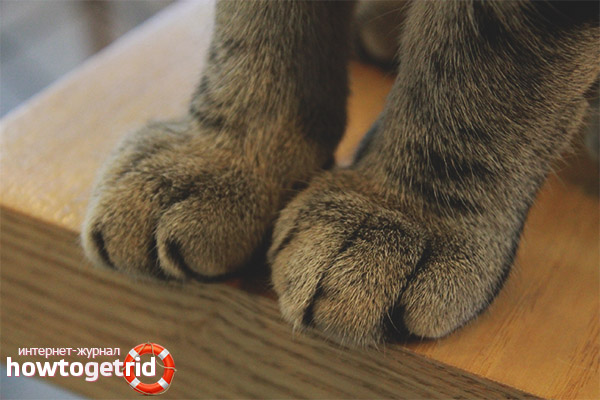



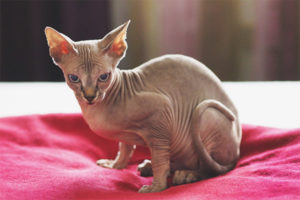
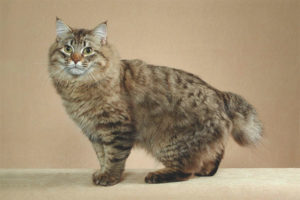
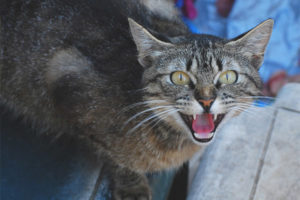
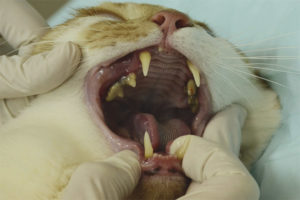

Submit